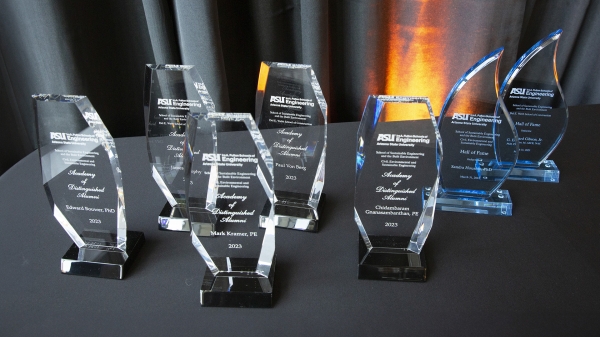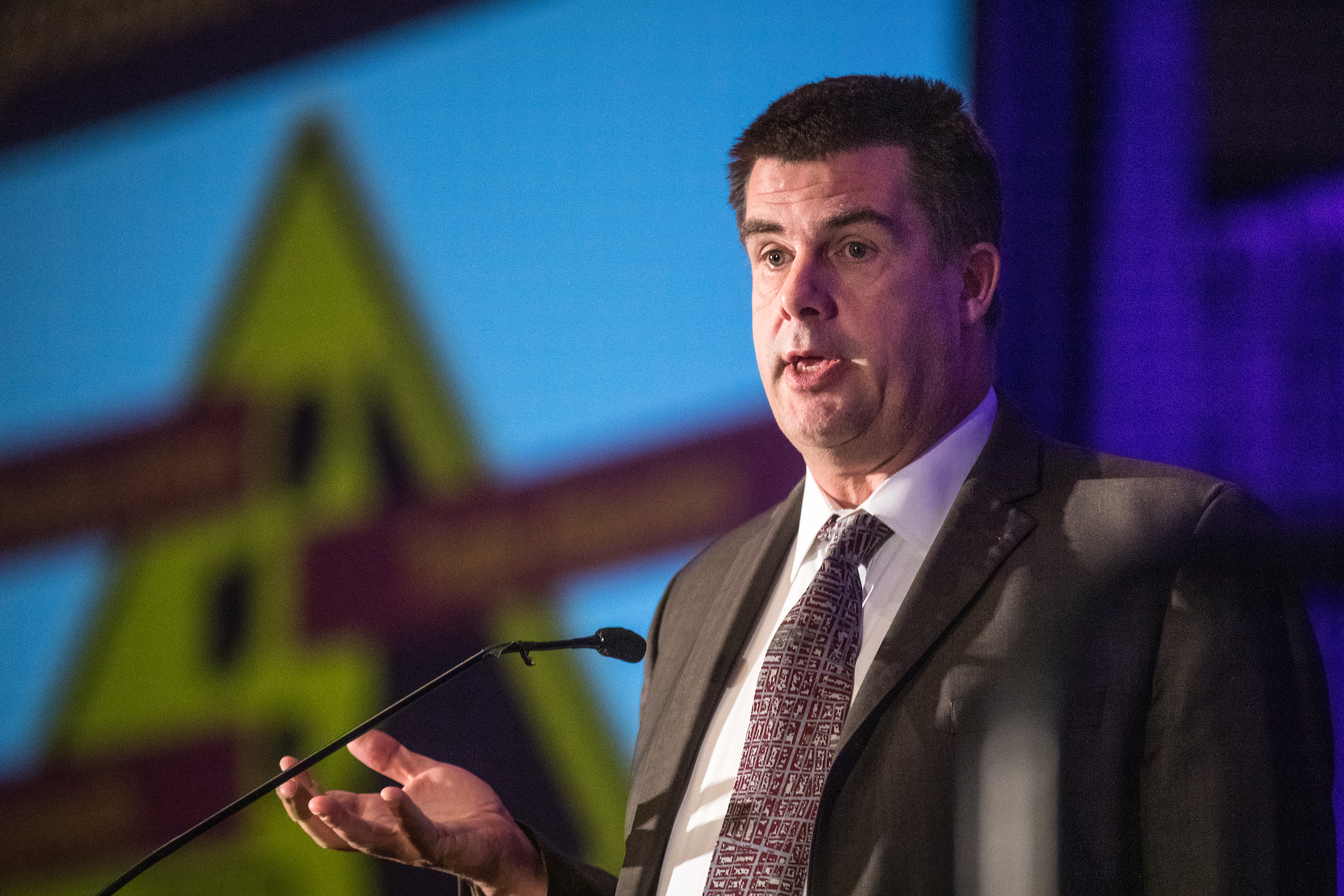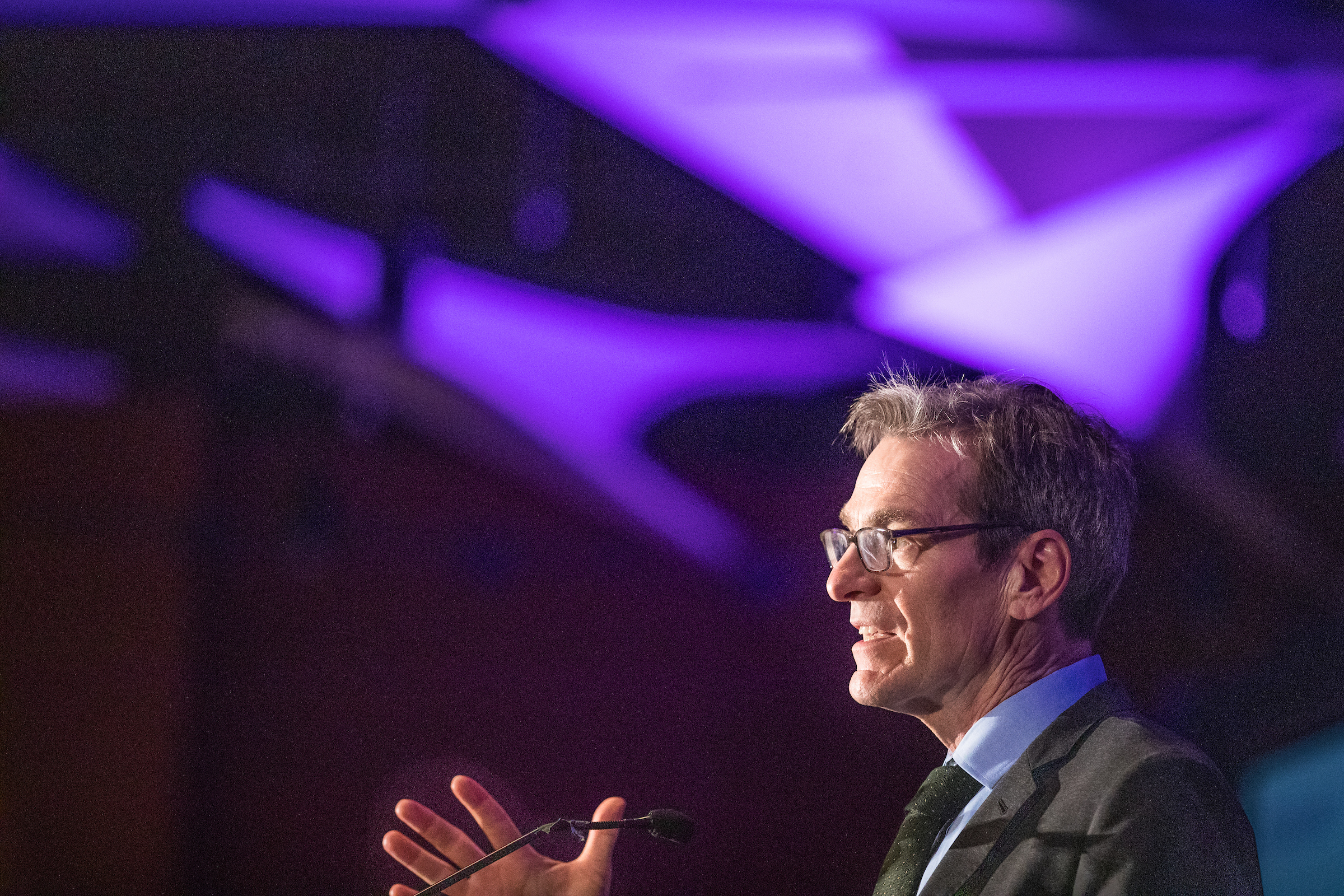Arizona’s economy is very strong, fueled by job creation and personal income gains — and that good news should last through 2019, according to Arizona State University’s economic outlook expert.
“2018, as we predicted, was a year of solid growth and it looks like we have solid momentum here in Arizona going into 2019,” said Lee McPheters, research professor of economics and director of the JPMorgan Chase Economic Outlook Center at ASU. He spoke at the 55th annual Economic Forecast Luncheon hosted on Wednesday by the W. P. Carey School of Business at ASU.
McPheters said that since 2010, Arizona has added half a million new jobs. Among the statistics he cited:
• Arizona was fourth in the nation for growth in gross state product in 2017.
• Arizona was fifth in the nation in personal income growth in 2017.
• Arizona’s unemployment rank sank from a high of nearly 11 percent in 2010 to 4.7 percent in October 2018 — the lowest in 10 years.
• Arizona ranked seventh in nonfarm job creation in 2017.
McPheters noted that eight of the top 10 states for job creation are in the West, with Utah, Nevada and Idaho ranked in the top three.
The biggest growth in Arizona was in the construction industry, with more than 14,000 jobs added.
“Are we in danger of a construction bubble? Well, construction was so hard hit in the downturn that we’re still building up,” he said. “We have 6 percent of the economy employed in construction, which is our long-term average.”
In 2006, 9 percent of Arizona’s jobs were in construction.
Overall, Arizona added 64,000 jobs in 2017, and is predicted to add at least 71,000 more this year and next year.
One driver of economic growth is population, and Arizona has the sixth-fastest growing population. The state is adding people who are leaving from other states, like California.
“Arizona added 63,000 people who moved into the state looking for better jobs or improved quality of life,” he said.
One area of concern is housing costs. Single-family home permits are up 15 percent in the Valley over last year.
Trade clashes are a risk to the national economy, according to Bart Hobijn, professor of economics in the W. P. Carey School. Photo by Charlie Leight/ASU Now
“Since 2010, home prices are up 50 percent in the Phoenix area while wages are up 25 percent,” he said. “So we’re in a situation where we have to deal with affordability.”
The good news is expected to continue into 2019, McPheters said, with the national economy being the biggest risk to the state’s economy. A trade war, for example. Mexico is Arizona’s biggest trade partner.
“What we see is a lot of work on Arizona aircraft parts and technology done in Mexico, and it goes back and forth across the border,” he said. “There are a lot of complexities in the supply chain, so anything that slows that down is bad for the Arizona economy.”
Trade clashes are a risk at the national level as well, according to Bart Hobijn, professor of economics in the W. P. Carey School.
“The delayed impact of global trade disputes is the biggest uncertainty we have,” he said. “We don’t even know what disputes we have — they seem to change on a day-to-day basis.”
He said tariffs, which are essentially taxes on imports, can hurt companies, especially smaller ones that can’t renegotiate their supply chains as easily.
“Most economists think that tariffs are not a good idea and in the long run will have an effect on growth in the U.S.,” he said.
The national economy also is strong, according to John Cochrane, the Rose-Marie and Jack Anderson Senior Fellow at the Hoover Institution at Stanford University. But the focus needs to be on long-term growth.
“We’re too focused on the latest recession and we’re too focused on the president’s latest tweets,” he said. “Everything depends on establishing better long-term growth.”
Cochrane said that long-term policy should work on getting “sand out of the gears” of the economy. He cited health care as an example where a patchwork of rules has created a system that’s so dysfunctional that hospitals are unable to give a price quote for a specific procedure. It started when the government gave a tax deduction for employers to provide health care in the 1940s.
“Then people who left their jobs and had pre-existing conditions didn’t have health insurance, so we created the pre-existing conditions test. Then you have to force everyone to get health care,” he said.
The country should be focusing on long-term economic growth, according to John Cochrane of Stanford University. Photo by Charlie Leight/ASU Now
“Now we have to force health insurers to cover things they don’t want to cover. The only way to do that is to limit competition, so then all the innovation goes.”
Hospitals cover their Medicare costs by overcharging private insurers.
“Every item patches up all the problems of the other items,” he said.
Cochrane said that health care is a complex personal service that people should pay for.
“You should be buying it and facing intensely competing suppliers,” he said.
“When you think about economics you should think about incentives — to work hard, save, invest, create businesses and create that disruptive innovation.”
Top photo: Lee McPheters, research professor of economics and director of the JPMorgan Chase Economic Outlook Center at ASU, gives the rosy economic forecast for Arizona at the 55th annual Economic Forecast Luncheon hosted by the W. P. Carey School of Business at ASU. Photo by Charlie Leigh/ASU Now
More Business and entrepreneurship

Thunderbird at ASU, W. P. Carey School team up on concurrent master's degrees
Students are now able to take advantage of two world-class schools at Arizona State University, at the same time. The Thunderbird School of Global Management and W. P. Carey School of Business…

ASU alum's personalized greeting card kiosk debuts on Tempe campus
Everyone knows how disheartening it is to dash into a store to grab a last-minute holiday card and find the selection picked over and in disarray.An Arizona State University alumna has created a…

Celebrating industry giants and distinguished alumni
Four outstanding alumni and two industry leaders will be honored at the School of Sustainable Engineering and the Built Environment’s Hall of Fame and Academy of Distinguished Alumni event, scheduled…


